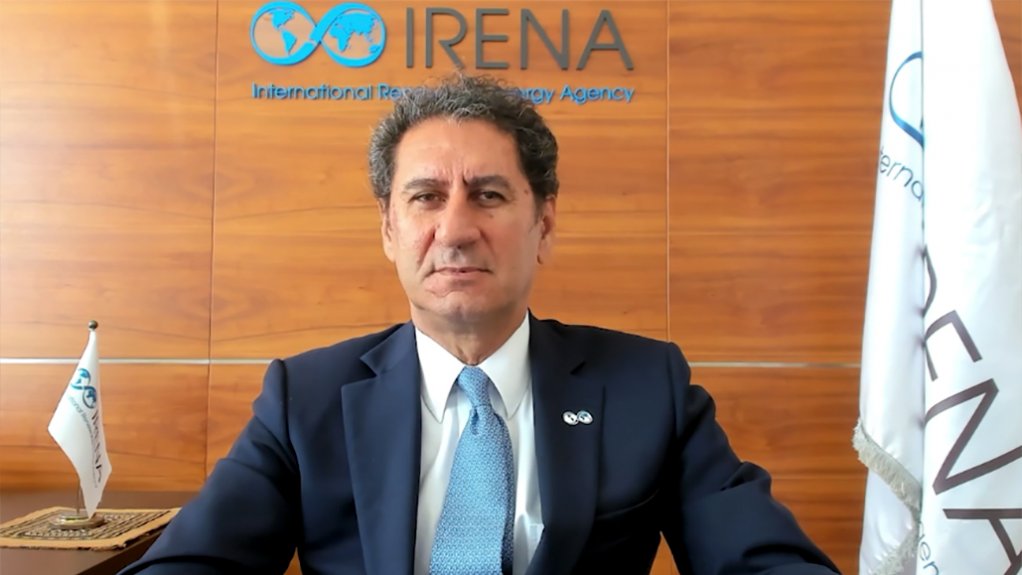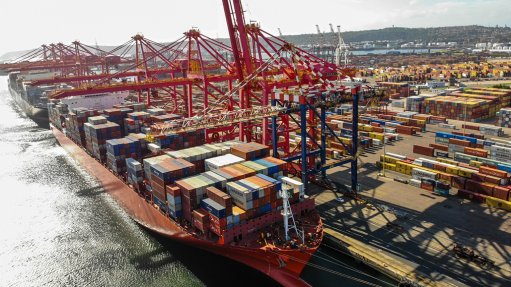Global installed hydropower capacity could double by 2050
Installed hydropower capacity could double by 2050 and play a key role in supporting the introduction of more variable renewable power, global industry organisation the International Renewable Energy Agency (Irena) states in its 'The Changing Role of Hydropower: Challenges and Opportunities' report.
Hydropower plants offer a range of services to the grid that includes balancing and ancillary services, while also enjoying a high capacity factor relative to some other renewable energy sources. These are becoming increasingly important in the context of the energy transition and climate change, the agency states.
Hydropower currently generates about 65% of all renewable electricity worldwide and utility-scale hydropower projects have an average levelised cost of electricity of $0.048/kWh, which is lower than fossil fuel-based alternatives and only bettered by onshore wind power.
Further, pumped storage hydropower (PSH) is the single-largest source of energy storage, accounting for 95% of the world’s electricity storage capacity.
"However, while hydropower is the largest source of renewable electricity, it can enable a higher penetration of variable renewables, such as solar and wind, by providing balancing and flexibility services," says Irena director-general Francesco La Camera.
Renewable generation capacity additions worldwide exceeded those of non-renewables in 2012 and, in 2020, nearly 90% of net capacity additions were renewable, with solar photovoltaic (PV) and wind technologies accounting for almost 90% of these additions.
"While this trend undoubtedly signifies great progress towards the decarbonisation of the power sector, it also implies the need for significant changes in power systems and the way they are managed. As the share of variable renewables in power grids increases, they require more flexible resource capabilities to ensure grid reliability," Irena emphasised.
Irena’s 1.5 °C Scenario suggests that, if the world is to completely decarbonise and meet the climate goals outlined in the Paris Agreement by 2050, hydropower installed capacity should reach roughly 3 000 GW, including 420 GW of PSH.
"When considering the present installed capacity of 1 360 GW, the current pipeline of 652 GW and the potential plant retirements by 2050 of 630 GW, capacity additions and/or refurbishments amounting to 1 545 GW will be needed," the report shows.
Further, renewable energy deployment attracted $1.8-trillion in investment between 2013 and 2018. However, over the past decade, investments in hydropower have been dwarfed by investments in solar PV and wind technologies, with only $72-billion invested in hydropower between 2013 and 2018. This is equivalent to about 4% of all the investments in other renewable energy projects.
Doubling installed capacity by 2050 will require yearly investments in hydropower to grow roughly five-fold and, as hydropower projects can struggle to attract investment, governments and decision-makers need to create a suitable business environment that will attract investors, Irena advises.
Further, most hydropower potential lies in developing countries and financing institutions need to work together with governments to overcome local risks and limitations and funnel much-needed investment into these regions and countries.
Hydropower potential has been estimated in a number of studies with varying results, although all results confirm that considerable potential remains. The technical potential for hydropower worldwide is between 31 petawatt-hours a year (PWh/y) to 127 PWh/y, while the economic potential is between 9 PWh/y to 15 PWh/y, the report notes.
A 2017 high-resolution assessment of global hydropower potential showed an ecological potential - potential hydropower projects that minimise negative social and environmental impacts - of 3.3 PWh/y with a levelised cost of electricity below $0.1/kWh. For context, 3.3 PWh/y is equivalent to more than three-quarters of the global hydropower generation in 2018, which was 4.2 PWh/y.
"Most of this potential lies in Asia, South America and Africa, which are regions where continued growth and economic development are expected," Irena said in the report.
The majority of the world’s hydropower capacity is in Asia with 42%, followed by Europe at 17%, North America at 15%, South America at 13%, Eurasia at 7% and the rest of the world at 6%.
Further, in most regions, PSH represents 9% to 13% of total hydropower installed capacity, although it is almost completely absent in Latin America, apart from a few plants in South America.
RENEWAL AND DEVELOPMENT
Most hydropower assets were built several decades ago to operate under different conditions to those of today. Changes and current trends in the power sector require both an acknowledgment of the value of hydropower, and a rethinking of its future role.
The increasing need to integrate variable generation resources, such as solar and wind, will lead to greater demand for grid flexibility and balancing services, and for a change in the way hydropower plants are operated and maintained, the report highlights.
Hydropower faces several challenges, including the need to ensure sustainability and climate resilience, address ageing fleets and the need for new investments, adapt in terms of operation and maintenance to meet modern power system requirements, and update market structures and business models that recognise and reward all of the services provided by hydropower beyond power generation.
"Modernisation, use of the latest technological advancements, along with guaranteeing social and environmental sustainability, are key to overcoming these challenges.
"Owing to the rising penetration of variable renewables, and as hydropower plants are increasingly called upon to operate outside conditions for which they were originally designed, markets and business models will have to adapt and appropriately reward the full suite of services provided by hydropower beyond just power generation," the organisation says.
Among the key policy actions policy makers can take to accelerate hydropower deployment is embedding the concept of integrated planning in long-term energy strategies, and not only focusing on the supply of energy, but also incorporating climate risks, storage needs and water management, the report advised.
"Policy makers can also develop and implement policies and markets that recognise the value of the flexibility and ancillary services provided by hydropower, as well as develop market frameworks that allow for broader participation of hydropower in energy and capacity markets, including sub-hourly markets, in countries that do not have them yet.
Countries should also develop incentives and financial support structures for the deployment and testing of new hydropower technologies, either for refurbishment or new development, Irena notes.
Comments
Press Office
Announcements
What's On
Subscribe to improve your user experience...
Option 1 (equivalent of R125 a month):
Receive a weekly copy of Creamer Media's Engineering News & Mining Weekly magazine
(print copy for those in South Africa and e-magazine for those outside of South Africa)
Receive daily email newsletters
Access to full search results
Access archive of magazine back copies
Access to Projects in Progress
Access to ONE Research Report of your choice in PDF format
Option 2 (equivalent of R375 a month):
All benefits from Option 1
PLUS
Access to Creamer Media's Research Channel Africa for ALL Research Reports, in PDF format, on various industrial and mining sectors
including Electricity; Water; Energy Transition; Hydrogen; Roads, Rail and Ports; Coal; Gold; Platinum; Battery Metals; etc.
Already a subscriber?
Forgotten your password?
Receive weekly copy of Creamer Media's Engineering News & Mining Weekly magazine (print copy for those in South Africa and e-magazine for those outside of South Africa)
➕
Recieve daily email newsletters
➕
Access to full search results
➕
Access archive of magazine back copies
➕
Access to Projects in Progress
➕
Access to ONE Research Report of your choice in PDF format
RESEARCH CHANNEL AFRICA
R4500 (equivalent of R375 a month)
SUBSCRIBEAll benefits from Option 1
➕
Access to Creamer Media's Research Channel Africa for ALL Research Reports on various industrial and mining sectors, in PDF format, including on:
Electricity
➕
Water
➕
Energy Transition
➕
Hydrogen
➕
Roads, Rail and Ports
➕
Coal
➕
Gold
➕
Platinum
➕
Battery Metals
➕
etc.
Receive all benefits from Option 1 or Option 2 delivered to numerous people at your company
➕
Multiple User names and Passwords for simultaneous log-ins
➕
Intranet integration access to all in your organisation





















